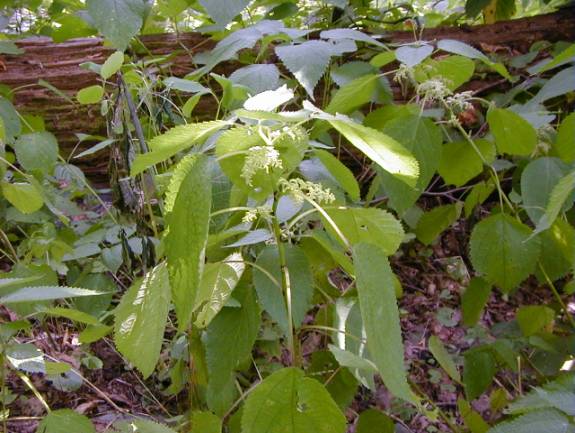|
Common Name: Stinging Nettle (possible deriving from Noedl, meaning needle) Scientific Name: Urtica dioica (meaning "two houses" possibly because male and female flowers are carried on separate plants) The Stinging Nettle is perhaps the most easily identified plant that is frequently encountered along the trail. Unfortunately, this is generally after having brushed against one, which results in a persistent burning sensation. Very common in moist areas, particularly alongside streams in mid-summer. Potpourri: The stinging hairs are hollow, tipped with a sharp-pointed terminal cell that readily penetrates the skin. The brittle tip breaks off in the skin and releases an irritating liquid. The operation is very similar to that of the hypodermic needle. The burning sensation usually goes away in less than an hour, but an itch may persist for hours or even days. Related stinging species such as the Urtica holosericea in the western United States reportedly have a sting powerful enough to kill a horse. The leaves of the nettle can be boiled and eaten like spinach. The stinging liquid is not poisonous and the boiling makes the hairs too soft to penetrate the skin. It was long thought that the main constituent of the sting was formic acid, the same chemical employed by fire ants. It has recently been shown, however, that the main chemicals are histamine, acetylcholine and serotonin. |
